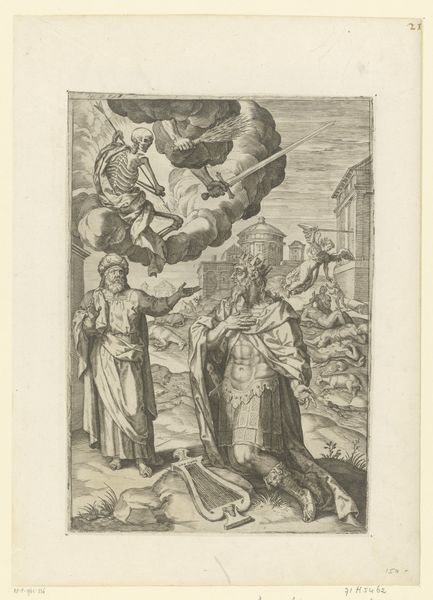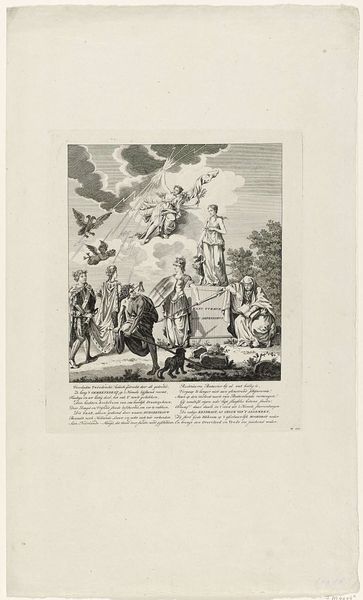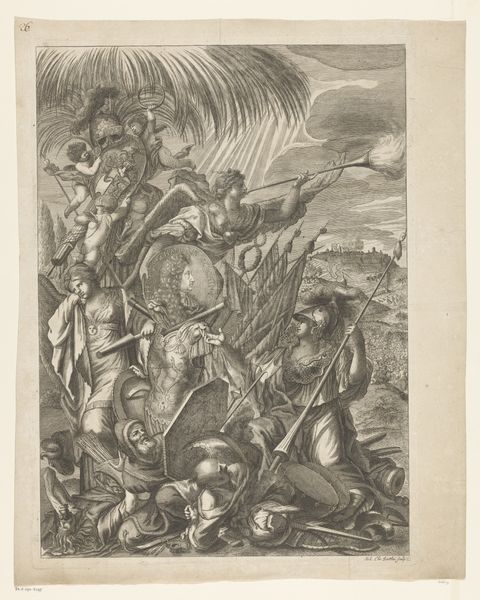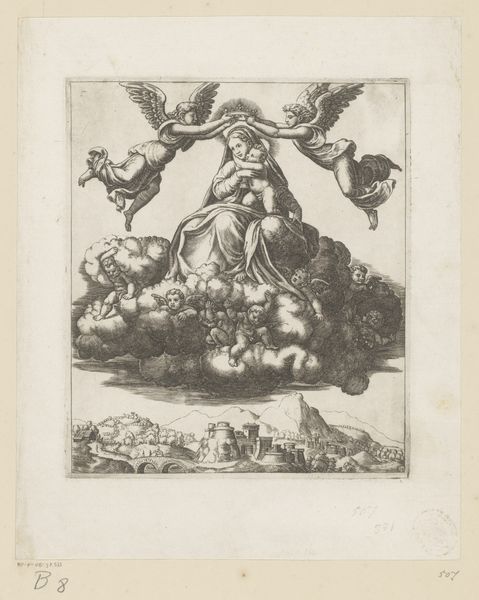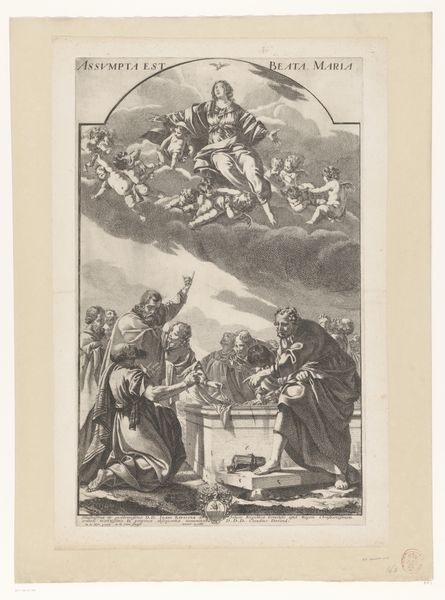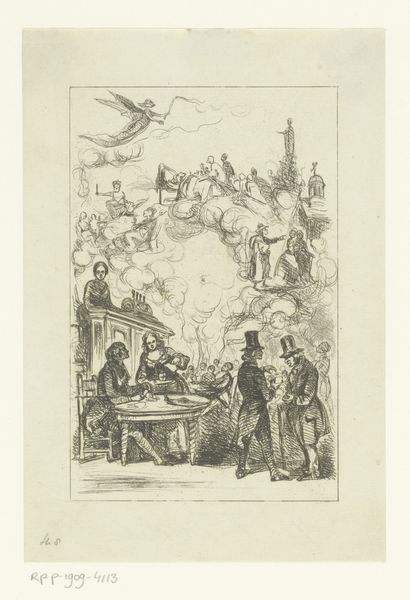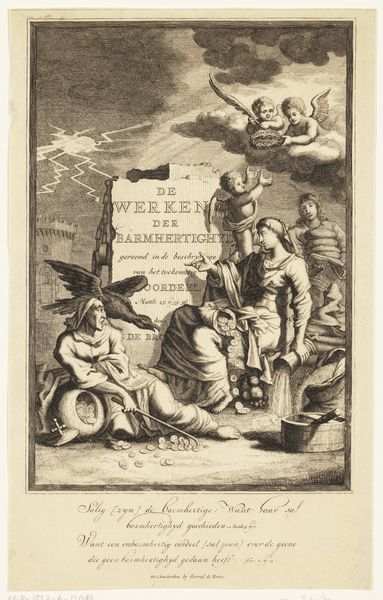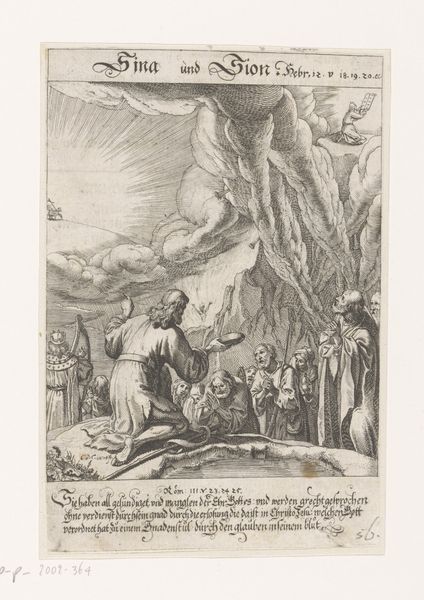
engraving
#
allegory
#
baroque
#
history-painting
#
engraving
Dimensions: height 177 mm, width 134 mm
Copyright: Rijks Museum: Open Domain
Curator: Jan Caspar Philips created this engraving, an Allegory with Martyrs, sometime around 1739 or 1740. It’s currently held here at the Rijksmuseum. What strikes you first? Editor: Well, the immediate impression is rather somber. Despite the baroque flair, the dense composition and monochrome rendering create a sense of oppressive weight. Curator: That density is typical of baroque allegories, designed to convey multiple layers of meaning simultaneously. You see the central figures illuminated, surrounded by scenes of apparent chaos and martyrdom. Editor: Exactly, but the positioning feels staged. Look at how those building the pyre seem almost theatrical, each caught in a carefully arranged pose. It suggests a political theater meant to legitimize violence against certain groups. Curator: That's an astute point. Engravings such as this one often played a critical role in shaping public opinion and religious identities. It invokes religious fervor. Note the angels in the sky, suggesting divine approval. Editor: And that central figure wearing a laurel crown presiding over this ritualistic execution is powerful. The artist surely meant to glorify sacrifice and martyrdom. Curator: The engraving serves as propaganda for religious piety. It underscores the concept of divine reward after worldly suffering. And Philips’ technical skill shines in his handling of light. It brings clarity, while also creating stark contrasts that emphasize the drama. Editor: Yet, the problem remains the normalization of violence. The piece promotes, however indirectly, the kind of zealotry that allows for such atrocities. Shouldn’t we examine the implications of presenting images of martyrdom outside of purely art historical circles? Curator: That's an essential conversation to have. These historical objects inevitably become implicated in present-day conversations about religious extremism. Studying pieces like this necessitates a frank discussion. It exposes how images can shape narratives. Editor: Agreed. Recognizing and resisting the potential for manipulation seems a critical skill in navigating historical artwork and contemporary image culture. Curator: Thank you, these complex narratives allow us to approach our shared history with more depth.
Comments
No comments
Be the first to comment and join the conversation on the ultimate creative platform.


